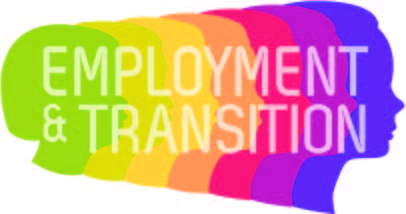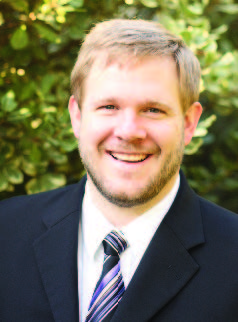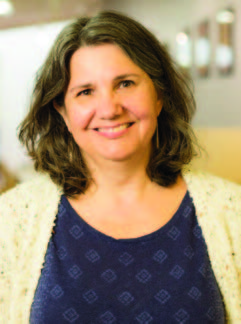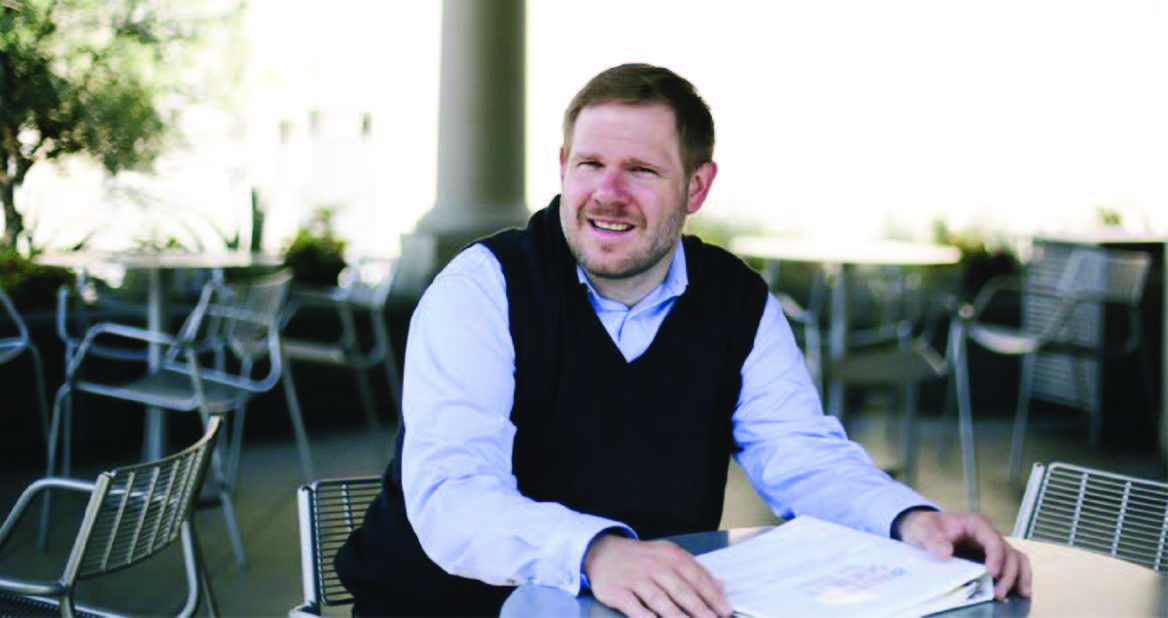
WHY DEAD MALLS AND THE RETAIL DIVE OF 2017-2018 COULD SPARK A BRAND-NEW HIGH SCHOOL TRANSITION MODEL FOR YOUNG ADULTS WITH DISABILITIES
BY STEPHEN HINKLE AND LINDA SHANDRICK LENGYEL
Transition planning for secondary students is critical for successful post-school outcomes. First mandated by the Individual with Disabilities Act (I.D.E.A) of 1990, and further strengthened in reauthorizations, transition services became a focus for parents and professionals alike. Quickly we came to understand that school systems should be preparing students for adult life before they exit out of special education services. The areas of preparation generally fall into the categories of employment, postsecondary education, community participation, and independent living. Transition services should be individualized and localized to best meet the student's needs. Several practices have emerged to promote successful transition that include the supporting and instructing students in high school programs with Community-based vocational exploration and learning (CBL). The Division on Career Development and Transition of the Council for Exceptional Children define CBL "as students engage in work learning opportunities to learn about careers and support their ability to make more effective decisions."
MANY SCHOOL DISTRICT-BASED TRANSITION PROGRAMS IN SCHOOLS TODAY STILL FOLLOW THE OLD MODEL OF ASSUMPTIONS, PREPARING ADULTS FOR ENTRY-LEVEL POSITIONS. THE TIME TO CHANGE THIS MODEL ON A NATIONAL LEVEL IS NOW FOR MANY REASONS.
Because the teaching and learning of transition-aged youth is often occurring in the community, the places selected are critical to the future success. The real-life experiences provided must take into consideration future planning, with careful thought to where the post-school graduate will be spending time living, working, and recreating. Most students are currently likely to be spending some time in retail stores, however, the future of retail brick and mortar settings is questionable as the retail sector is declining today as an industry. It can be tempting to rely on retail settings for CBL; however, this trend is seen as a threat to people in transition programs and people with disabilities looking for jobs. This necessitates the rethinking of traditional transition programs with community-based exploration and learning experiences that have relied heavily on the retail industry, calling for a model that expands beyond traditional training into a more diverse range of career paths and that takes advantage of the person's interests and talents.
Historically many of the life-after-high school transition programs operated by most school districts in the USA are for young adults aged 18 to 22, although the ages vary across the states. The purpose of the non-diploma track special education transition programs has been to train people with disabilities to work in the workforce in an entry-level position. The programs often involve working towards a job in the retail sector, the fast food sector, and the janitorial sector, among others. Common positions include grocery baggers, greeters, inventory people who stock shelves, cashiers, food service and janitorial workers. The hope is that young adults graduating out of special education services will have jobs in the communities they want to live in, providing them a level of independence and the pride of contributing back to their community.
While this arrangement seemed beneficial when it was created, this model is no longer built for today's time and job markets. We are discovering that many people with disabilities have unique talents to share and are becoming more accepted into mainstream society through inclusion. The retail sector is declining today as an industry. Social security and Medicaid asset caps are way below the cost of living in many cities around the country, and apartment and home rental prices keep treading upwards across the nation. More and more people with disabilities are choosing to go on to college after high school. Yet, many school district-based transition programs in schools today still follow the old model of assumptions, preparing adults for entry-level positions. The time to change this model on a national level is now for many reasons.
The first main reason is the recent retail dive. Throughout 2017 to 2018, there have been numerous retail store closures. In 2017 alone, over 6700 stores have closed in the USA, and more closings are predicted in the coming years. Many of these closures have included big names like Sears, Kmart, Macy's, Toys R Us, JCPenney, GameStop, Payless Shoe Source, Staples, and many others. Some of these chains have declared bankruptcy and many more are expected to do so in the near future.
Store closures have led to entire shopping malls falling on hard times. Malls all across the USA are going vacant and dying. The term "dead mall" is used to describe a shopping mall that is on its last leg. Either this is a mall that has a very high vacancy rate and has very few shops remaining, or the entire mall has closed and became abandoned.
When malls close up, communities are left with empty buildings and fewer jobs, especially entry-level jobs. Some of these malls eventually face the wrecking ball and get torn down and redeveloped into condos and apartments, or re-purposed for use by nonretail tenants such as schools, college campuses, data centers, web hosting companies, warehouses, mega churches, offices, medical centers, and even government services, among a variety of other things. When non-retail tenants take over a mall building, the education requirements to qualify for a job in the building and the type of jobs offered in the area changes significantly.
But there is an even bigger threat looming to retail jobs in the 21st century, the rise of online shopping. More and more people are doing their shopping online through websites like Amazon, eBay, Revolve, Zappos, and others. This means less people are going to be shopping in brick and mortar stores. As the result, according to the firm Credit Suisse, over 25% of the malls in the USA could die with in a few years. The current trend in retail is less big box stores, and that stores of the future will be smaller than today.
With what some have coined "the retail apocalypse," there can be a significant impact to people with disabilities trying to find entry-level jobs. Many stores have embraced the self-checkout model, adding to the reduction of jobs. There are going to be fewer and fewer retail jobs if these trends of online shopping and automation continue. Additionally, many millennials are pre ferring healthier and a more diverse range of food options and less traditional fast food leading to more changes in the industry.
As the result, we need to start preparing for and implementing a brand-new life after high school transition model, one that embraces training much more diverse range of career paths and takes advantage of the person's interests and talents. Such a model will require many changes, including encouraging more people with disabilities to take standard diploma tracks in high school, supporting students on college campus, and more self-determination, all requiring creativity and flexibility.
WHAT MIGHT SUCH A TRANSITION MODEL LOOK LIKE?
Currently, many high schools have functional skill-based tracks that often begin in ninth grade and lead to an alternative diploma options such as certificates of completion, IEP / Special Education diplomas, and vocational certificates. The alternative diploma route provides a less rigorous academic option that can create barriers to future employment and college experience options.
Instead, more students with disabilities can be in inclusive high schools that continue to foster academic skills, as well as higher order thinking such as problem solving, goal setting, and autonomous decision making. Academic and career tech classes can by encouraged that focus on subjects and areas of expertise or even fascinations. Many students can have difficulties in academic areas such as reading, and at the same time be quite gifted in another area such as technology or science. By taking a more personalized approach that goes beyond typical entry-level jobs students can expand on talents and strengths that may define their career path in the 21st century.

A WIDER PERSPECTIVE: "We need to start preparing for and implementing a brand-new life after high school transition model, one that embraces training much more diverse range of career paths and takes advantage of the person's interests and talents."
Currently, some students are in school-based programs until they reach age 21 or 22, or older depending on the state. Although these programs do offer community experiences, their "home base" is still the high school building. Movement to settings such as colleges or universities, vocational training centers or college campuses would provide more age appropriate experiences and the opportunity to build relationships with same aged peers.
There are some great programs for young adults with intellectual disabilities on college campuses. The book Think College by Meg Grigal and Debra Hart is a great resource. Some of these college-based programs overlap with school-based programs by using special education monies for funding, others require the applicant to have exited out of Special Education services.
While these programs are meeting the needs of many young adults, there are still young adults who may not be ready for those programs, or are seeking a different type of college experience. Therefore, other options are also arising. The second author, Linda, is working in partnership with a few 18 to 22-year-old transition programs to pilot a college experience. In an undergraduate Social Justice Service Course several students in a school-based program will be auditing the course, taking it alongside undergraduates. The outcome of the course is the development and implementation of a service project designed collectively by the class. While it is a limited one-course experience, it provides an inclusive college experience for students who otherwise may not have that option. It's a pilot … a start.
Times are changing, more and more students are interested in going to college like their siblings, and are rejecting the notion of going straight into the entry-level work force. Likewise, transition programs may be losing their job-sites in the retail industry, creating an opportunity for more creative and flexible options. The best way to determine which career path one should explore is to really examine one's strengths, talents, and interests and then explore all of the places in the community and workforce that could use those talents. Doing so will require expanding into other industries instead of solely focusing on low wage, entry-level positions.•
ABOUT THE AUTHORS: Stephen Hinkle, a well-respected international speaker and self-advocate, has been presenting and speaking for over 16 years. He has inspired audiences, successfully advocated for inclusive education and better outcomes for people with special needs, and assisted others on how to help people with disabilities. Stephen has spoken at many conferences and events in 24 US States, plus Australia. Linda Shandrick Lengyel is an Associate Professor at Lesley University, and the director of the Severe Disabilities Teacher Licensure and Transition Specialist Programs. Before entering Higher Education, Linda supported persons with complex profiles and their families in school, work, and home settings. Dr. Lengyel also has an extensive history of advocacy, advocating for inclusive opportunities across all environments.


EXCEEDING EXPECTATIONS : STEPHEN HINKLE
Co-author Stephen Hinkle has his own experiences to share that demonstrate the power of inclusive schooling and high expectations. "While I was in school, many of my teachers had low expectations for me as a student. I had one English teacher that didn't want me in her class and tried to get me to drop out to go into the Special Education English class. There were other people that put low expectations on me and thought I should get an alternative diploma. But I took AP classes in Physics, Computer Science, and in Calculus, all as a Special Education student. I did struggle with English and History as inferring messages was harder, and I had modifications. I graduated with a real high school diploma and went on to San Diego State University as a computer science major. Later I attended Northern Arizona University for a Special Education degree with emphasis in Disability Policy Studies. Currently I am a Ph.D. student at Chapman University!"
